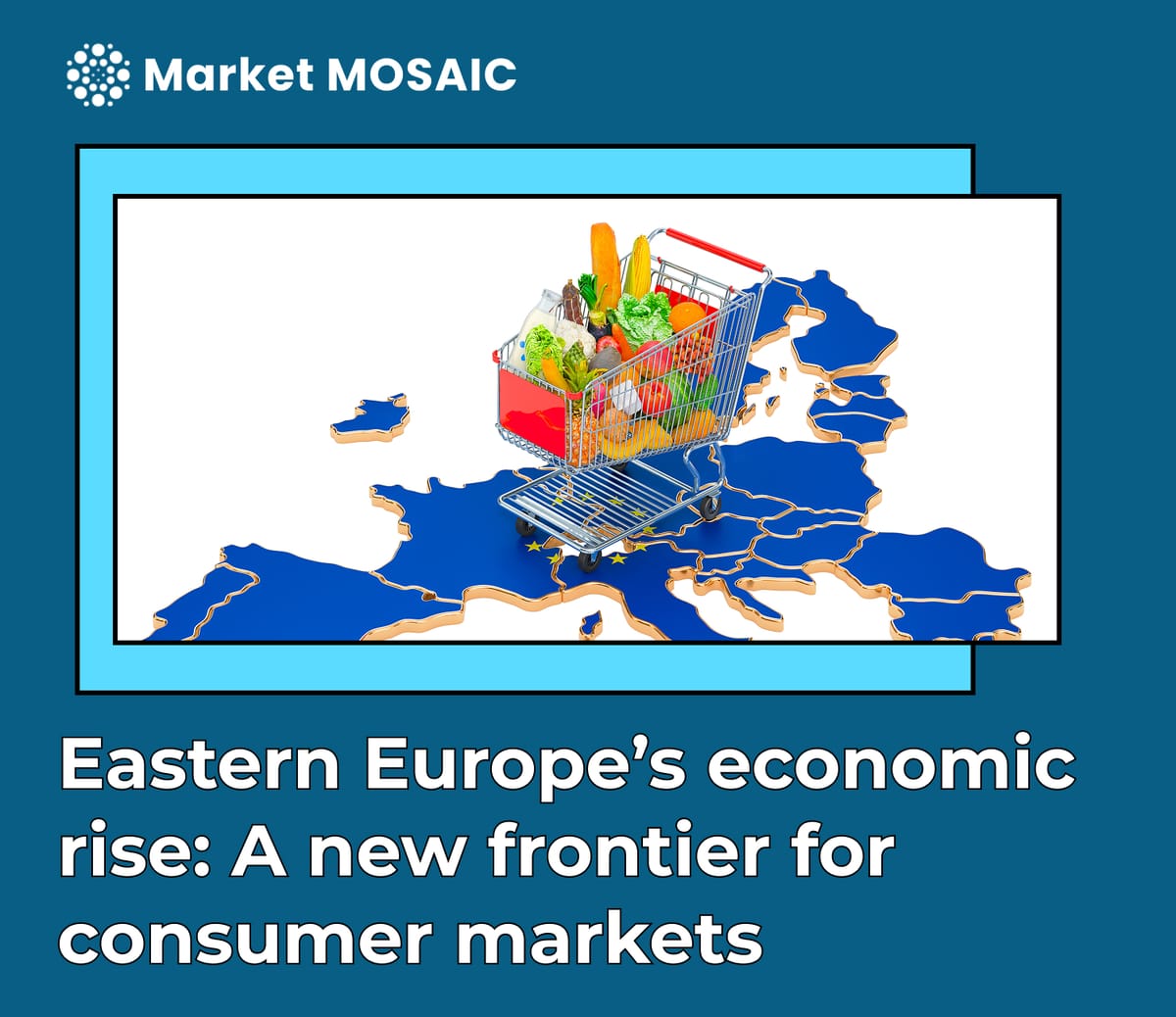Eastern Europe’s economic rise: A new frontier for consumer markets
Eastern Europe’s $12.8T economy is reshaping the European market. Consumers in Poland, Romania, and Ukraine are growing more digital, savvy, and value-conscious, creating a new frontier for brands and investors ready to tap into this fast-evolving, high-potential region.

A new consumer story unfolds
Eastern Europe is no longer just a supporting player in Europe’s economy, with a $12.8 trillion PPP-adjusted economy, the region is reshaping the $44 trillion European market and demanding attention from global brands.
Germany and France remain Western Europe’s anchors at $6.2 trillion and $4.5 trillion, but Eastern Europe has built its own momentum. Russia leads with $7.2 trillion, and Poland’s $2 trillion economy is increasingly setting the pace for regional growth.
From the shadows to center stage
For years, Western Europe was the main focus for consumer brands, seen as the richest and most reliable market. Eastern Europe, by contrast, was often overlooked. That is no longer the case. Poland, Romania, and even Ukraine; despite the war, are now driving consumer spending patterns that stand alongside those of their Western neighbors.
The World Bank forecasts Poland’s economy to grow 3.1% in 2025, fueled by strong private spending. Romania is growing at 3%, supported by steady investment and rising consumer confidence. Together, these trends reflect a shift in how people in the region are making purchasing decisions.
Consumers who shop smarter
The transformation is perhaps most visible in Poland. Nearly every internet user—93 percent—has made an online purchase in the past six months. Consumers are no longer distinguishing between channels either. A strong majority, 71 percent, buy the same brand both online and in-store, showing how much weight they place on seamless shopping experiences. Average monthly online spending now hovers around $370, which is almost on par with the EU average.
But growth here carries its own nuance. Consumers are increasingly price-sensitive, with more than 70 percent of Polish shoppers using comparison tools before buying. Flexible payments, especially “buy now, pay later,” are gaining traction. In short, Eastern Europe’s digital consumer is savvy, cautious, and determined to extract maximum value while enjoying modern convenience.
Romania’s rapidly growing IT sector is driving strong demand for technology products, while in Ukraine, spending on personal care remains steady despite economic challenges. Across the region, consumers are combining Western-style aspirations with a practical focus on value..
Why this matters for business leaders
Poland’s consumer market, backed by EU funding and a growing middle class, is forecast to outpace many Western peers with 3.5% GDP growth in 2025. Romania, after posting 4.8% growth in 2022, is becoming an investment hub for both tech and consumer goods. Even Ukraine, under extraordinary pressure, is showing resilience through steady demand in tech and personal care.
For business leaders, this is more than a regional trend. It’s a strategic wake-up call. Eastern Europe cannot be treated as an afterthought or a copy-paste market for Western campaigns. Success depends on tailoring strategies to reflect local realities. Pricing needs to be sharper, payment systems more flexible, and brand storytelling deeply rooted in cultural relevance.
Seamless shopping across online, mobile, and in-store channels isn’t just a nice-to-have anymore—it’s what customers expect. Companies that can seamlessly connect mobile, store, and online will win loyalty in markets that value consistency and trust. Timing matters too. With e-commerce adoption still climbing, the window remains wide open for early movers to secure dominance before global competitors crowd the space.





